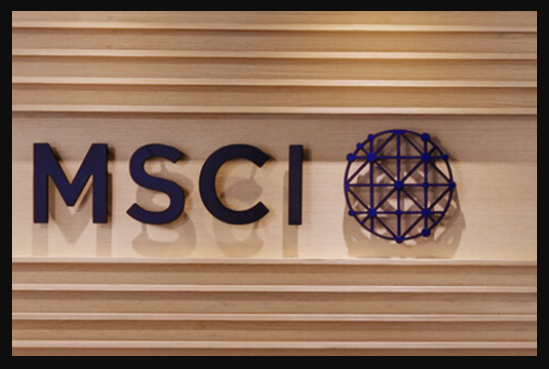At the moment, India makes up about 17.9% of the MSCI Emerging Market Index. The weight will reach a historic high of more than 18.2% after the February rejig
In its February quarterly review, global index provider MSCI announced on Tuesday that five Indian stocks have been added to the MSCI Global Standard Index. After the adjustments, these stocks are expected to see inflows of about $816 million.
Additionally, the index provider has decreased the weights of two stocks and raised the weights of twelve stocks. Additionally, MSCI changed the Small Cap index by adding 27 stocks and removing 6 stocks.
At the moment, India makes up about 17.9% of the MSCI Emerging Market Index. The weight will reach a historic high of more than 18.2% after the February rejig.
The decision by MSCI, which came in a quarterly review on Monday and also removed dozens of Chinese names from the MSCI China All Shares Index, the China A Index, the China A International Index, and the China-A Onshore Index, weighed on the Hong Kong market early on Wednesday.
The changes to the index compiler’s MSCI China Index saw a net loss of 61 names, leaving about 700 companies. This indicates a shifted frame of mind of investing in China. The benchmark Hang Seng Index experienced a 1.8% decline before turning positive during the midday break.
A few of the companies that were removed are also listed in Hong Kong. These include Technology, Ping An Healthcare, and Greentown China, which saw losses of 0.9%, 3.1%, and 3.1%, respectively.
China’s share of the index has now decreased to 25.4%. Analysts predict that the weightage difference between Chinese and Indian stocks on the MSCI index will continue to close, making it the smallest gap in history.
The increased weightage could bring in an additional $20–30 billion for India, according to calculations that take into account passive funds that track the MSCI index and their usual rebalancing procedures. The growth potential of India may also draw fund managers, thus boosting inflows.”
India now has 131 stocks in the MSCI Standard index in 2023 after a net of 17 Indian stocks were added during the previous four reviews. Compared to 2022, when there were only nine Indian stocks included overall, this represents an improvement.

The significant surge in India relative to other Emerging Markets and MSCI’s switch from semi-annual to quarterly rebalancing for stock inclusions/exclusions are the noteworthy factors responsible for this increase in 2023.
India has the potential to surpass a 20% weight in the MSCI EM Index by early 2024 if steady FII participation resumes and DII flows continue.
In the meantime, as international investors appear to be abandoning China in favor of Dalal Street stocks, inflows into India may also quicken.
Significant underperformance has occurred in the Chinese stock market, especially in the last three years. China’s banking and real estate sectors might keep having an impact on the economy through Q1CY24, offsetting the moderate growth seen in many consumer sectors.
In 2023, the average daily turnover on the stock market was 790 billion yuan, the lowest since 2019. Leading emerging markets (EM) funds continue to steer clear of the Chinese stock market. The risk associated with China’s equity market could prolong stagnation if large EM funds keep leaving. The average amount of Chinese stocks held by top EM funds has dropped
to a five-year low, and very few have increased their holdings.
India is the second-largest country weight (18%) in the MSCI Emerging Markets Index, after China (23%). Five years ago, China’s weight was 31% and India’s was 8%.
With India’s outlook remaining positive, we anticipate that the country will draw in more capital on its own merits.
However, China’s missteps would only stoke the flames; while more capital may have a positive impact on prices, a correction may also occur if earnings growth is outpacing the market. This underscores the importance of selective investing and concentrating on businesses with solid fundamentals. Industries like infrastructure, consumer staples, healthcare, and a few IT firms that profit from robust domestic demand and government initiatives will continue to be in demand.



